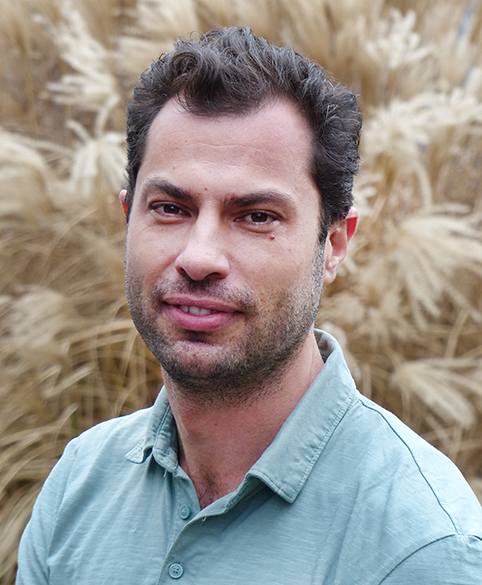
Ralph S. Grand
ZMBH Junior Research Group Leader
ZMBH
Im Neuenheimer Feld 282
69120 Heidelberg, Germany
Tel. +49 (0) 6221 - 54 6715
r.grand@zmbh.uni-heidelberg.de
coming soon: www.grandlab.de
|
Welcome to the Grand lab!
All cells grow, divide and respond to the environment by precisely controlling the switching on and off as well as the level of gene expression (Figure 1). Gene regulation occurs at many levels, with one of the most fundamental being the ability of proteins called transcription factors (TFs) to read DNA sequences to generate specificity in gene control. In eukaryotic cells, including humans, DNA is packaged together with proteins into chromatin, which occludes the ability of TFs to access the DNA sequence (Figure 2). In addition, the chemical modification of DNA and chromatin proteins, called epigenetic information, can further influence the ability of TFs to access their recognition sequences. How TFs engage with their recognition sequences in chromatin to control when, where and at what level genes are turned on and off, is still not well understood. This contributes to our inability to precisely understand the functional consequences of genetic and epigenetic variation associated with disease. Genes that encode for fundamental cellular processes, such as RNA expression and metabolism, need to be robustly expressed in all cells. The expression level of these genes is thought to be tightly controlled by the redundant action of many TFs in different cell types. However, the recent description of BANP’s ability to access chromatinised DNA and activate cellular essential genes without the assistance of additional TFs, emphasises the need to reevaluate how these genes are regulated. The Grand lab strives to dissect the mechanisms of gene activation in mammalian chromatin by combining cutting-edge quantitative molecular biology, both in vitro and in vivo, with bioinformatics and mathematical modeling. Our initial focus will be on the factors and molecular mechanisms that govern the robust activity of cellular essential genes and how the tissue specific action of critical TFs is regulated and contributes to cellular phenotype. We envisage that a deep understanding of the components and mechanisms that regulate gene activity will enable the development of novel targeted therapeutics to improve human health.
Selected publications Original Research Papers Grand, R.S.*, Burger, L.*, Gräwe, C., Michael, A.K., Isbel, L., Hess, D., Hoerner, L., Iesmantavicius, V., Durdu, S., Pregnolato, M., Krebs, A.R., Smallwood, S.A., Thomä, N., Vermeulen M., Schübeler, D. BANP opens chromatin and activates CpG-island-regulated gene. Nature. August 2021, 596, pages 133-137. Michael, A.K.*, Grand, R.S.*, Isbel, L.*, Cavadini, S., Kozicka, Z., Kempf, G., Bunker, R.D., Schenk, A.D., Graff-Meyer, A., Pathare, G.R., Weiss, J., Matsumoto, S., Burger, L., Schübeler, D., Thomä, N.H. Mechanisms of OCT4-SOX2 motif readout on nucleosomes. Science. 26 Jun 2020: Vol. 368, Issue 6498, pp. 1460-1465. Matsumoto, S.*, Cavadini, S.*, Bunker, R.D.*, Grand, R.S., Potenza, A, Rabl, J., Yamamoto, J., Schenk, A.D., Schübeler, D., Iwai, S., Sugasawa K., Kurumizaka, H., Thomä, N.H. DNA damage detection in nucleosomes involves DNA register shifting. Nature. 4 July 2019. Vol 571. Hartl, D., Krebs, A.R., Grand, R.S., Baubec, T., Isbel, L., Wirbelauer, C., Burger, L., Schübeler, D. CG dinucleotides enhance promoter activity independent of DNA methylation. Genome Research. April 2019. Vol 29:4. [OA]. Grand, R.S.*, Pichugina, T.*, Gehlen, L.R., Jones, B.M., Tsai, P., Allison, J.R., Martienssen, R., O’Sullivan, J.M. Chromosome conformation maps in fission yeast reveal cell cycle dependent sub nuclear structure. Nucleic Acids Research ‘Breakthrough article’ and cover, November 2014, 42(20), pages 12585-12599. [OA]. Cagliero, C.*, Grand, R.S.*, Jones, M.B., Jin, D.J., O'Sullivan, J.M. Genome conformation capture reveals that the Escherichia coli chromosome is organized by replication and transcription. Nucleic Acids Research, April 2013, Vol 41, No. 12, pages 6058-6071. Mentioned in Faculty 1000. [OA].
* The authors contributed equally to the work and should be regarded as joint First Authors. |